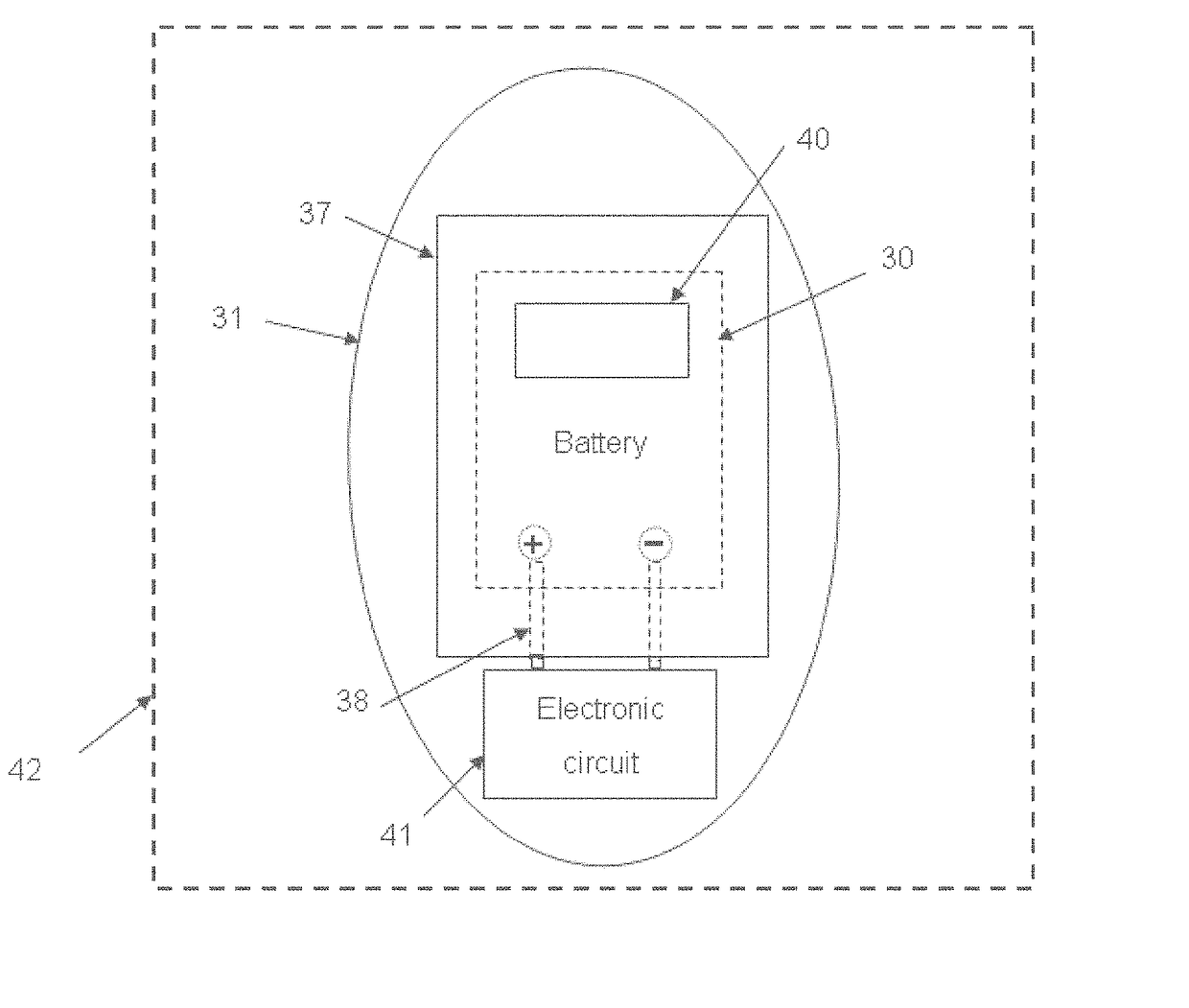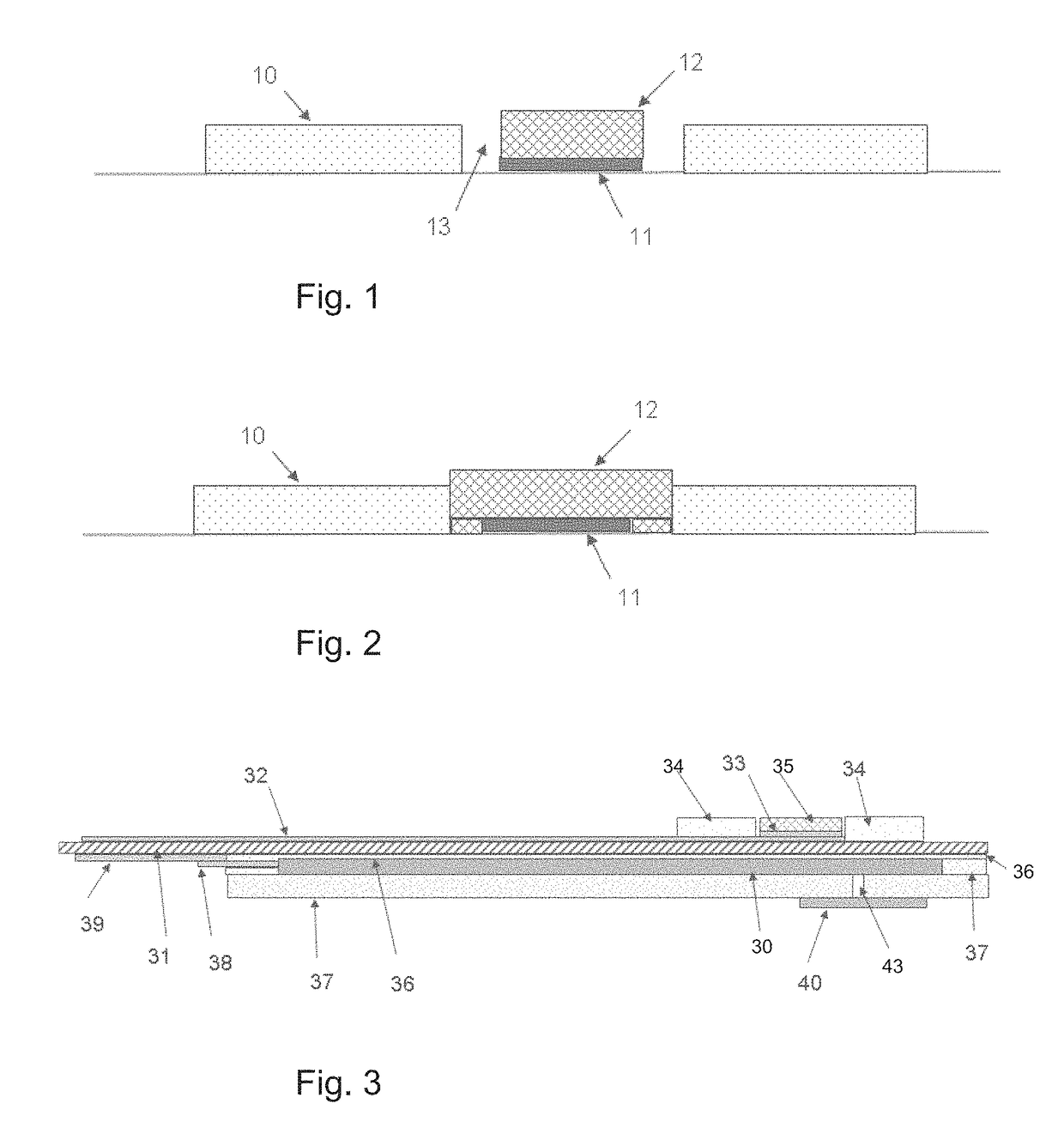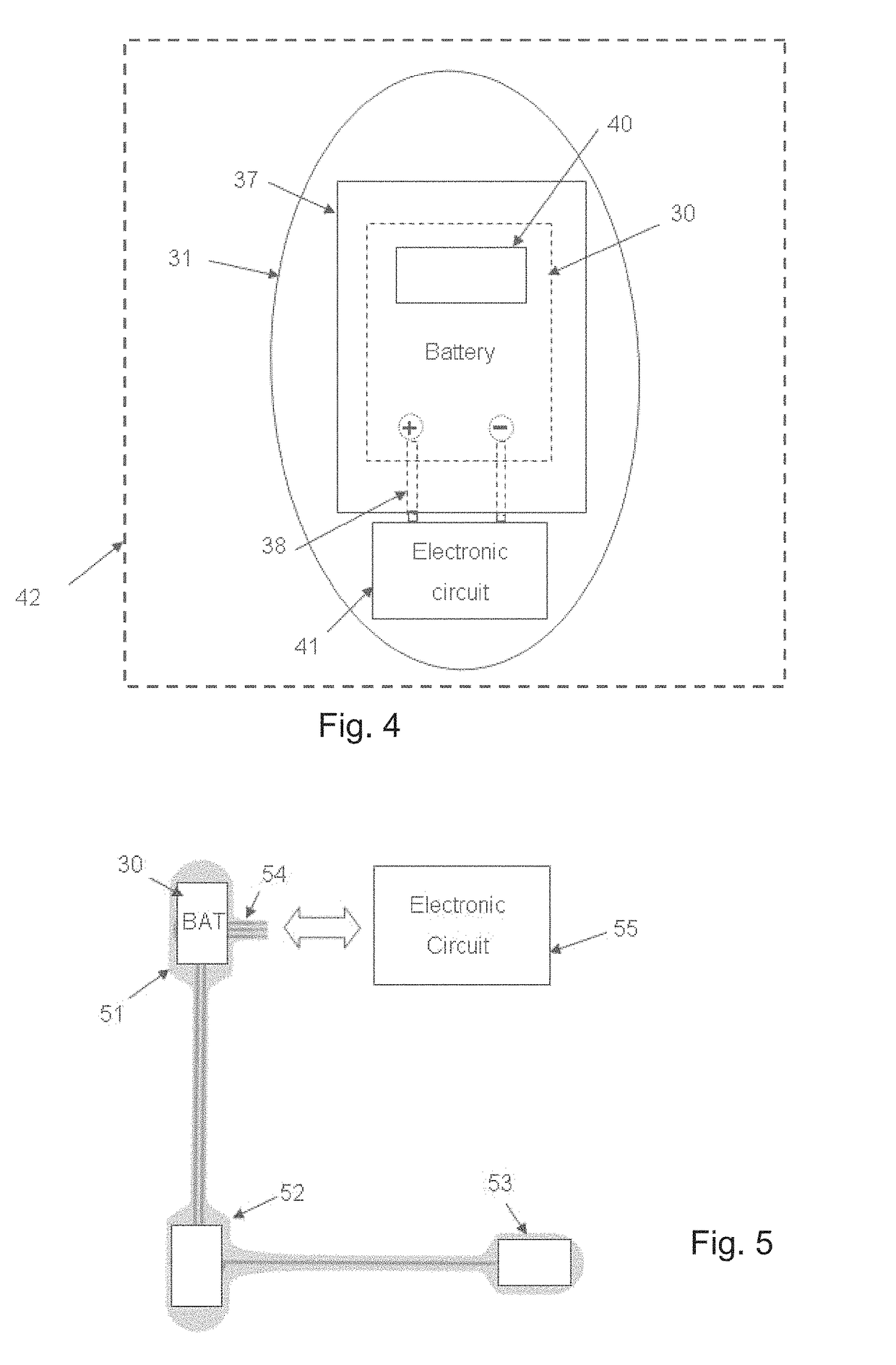Single-use biomedical sensors
a biomedical sensor and single-use technology, applied in the field of single-use biomedical sensors, can solve problems such as difficult maintenance, increase in tendency to tangle up disproportionally with the number of cables, and create infections and usability problems, and achieve the effect of long shelf li
- Summary
- Abstract
- Description
- Claims
- Application Information
AI Technical Summary
Benefits of technology
Problems solved by technology
Method used
Image
Examples
Embodiment Construction
[0022]An electrode for measuring biosignals from a recording surface, for example a skin of a patient, may be called as a ‘wet’ electrode in presence of an electrolyte on the contact surface attached to the skin. A ‘wet’ electrode may be attached to the skin using a conductive liquid, hydrogel or solid gel, e.g. electrolyte gel, to improve the electrical conductivity between the recording surface and the electrode sensing element, such as a silver / silver chloride (Ag / AgCl) electrode layer. Typical components of a conductive gel may include water (which acts as the solvent), water-soluble monomers which crosslink to give structure to the gel and which may also provide skin adhesion, humectant materials which reduce the dryout characteristics of the conductive gel, and electrolytes or salts, such as sodium chloride (NaCl) or potassium chloride (KCl) dissolved in water, which provide the ionic conductivity. One advantage of conductive gels over other conductive electrolytes is that the...
PUM
 Login to View More
Login to View More Abstract
Description
Claims
Application Information
 Login to View More
Login to View More - R&D
- Intellectual Property
- Life Sciences
- Materials
- Tech Scout
- Unparalleled Data Quality
- Higher Quality Content
- 60% Fewer Hallucinations
Browse by: Latest US Patents, China's latest patents, Technical Efficacy Thesaurus, Application Domain, Technology Topic, Popular Technical Reports.
© 2025 PatSnap. All rights reserved.Legal|Privacy policy|Modern Slavery Act Transparency Statement|Sitemap|About US| Contact US: help@patsnap.com



